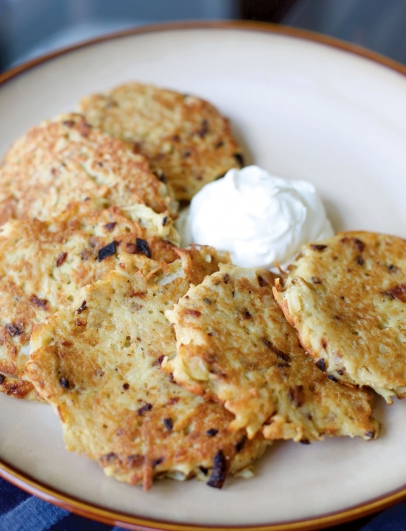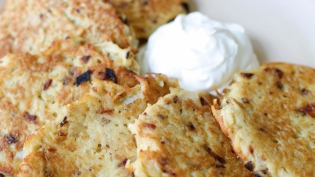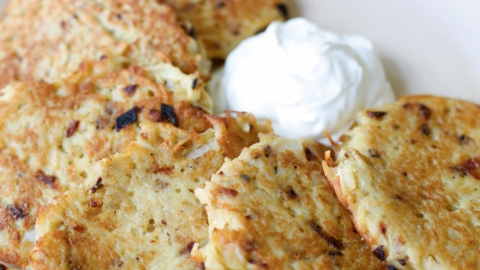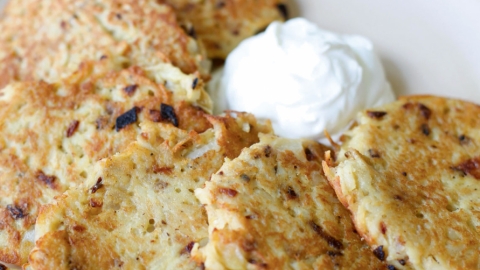My Savta's Latkes
Brought to you by The Village School, where we believe that through open collaboration with people from varied cultures, languages and values, our students are encouraged and expected to make a positive impact on those around them.
My maternal grandmother, Efrat Zimet, was one of the best cooks and bakers. She put her love into everything she made. Her impressive skills were honed on the stone wheel of a diverse culinary palette of European and Middle Eastern cuisine. She passed away July 2017, less than a month shy of her 95th birthday.
Savta Efrat (Savta is “grandmother” in Hebrew) was third-generation Israeli born; my siblings and I are an uncommon fifth-generation Israeli. Her grandfather was among the men who left the walls that surround Jerusalem in 1886 and established the first Israeli agricultural settlement, Petach Tikva. As a high school student, she worked after school in orange groves, wrapping and placing the fruit in wooden shipping crates to be sent to Europe or America, where oranges at the time were extremely expensive.
Her latkes (Levivot in Hebrew) recipe, like most simple and deeply comfortable “peasant food,” is not complex. It is simple yet elegant in construction, fried to absolute perfection. I still feel comforted by the memories of walking home from elementary school in the Israeli winter, arriving just in time to smell the sumptuous aromas of fried goodness and fresh-squeezed orange juice that she made on a (now) old-fashioned hand-pump juicer.
As the holiday seasons approaches, I plan to do as my mother, Deborah, did with my sweet Savta, and make my three little first-generation Texan boys—Gideon, Ezra and Seth—the same food and same memories.









